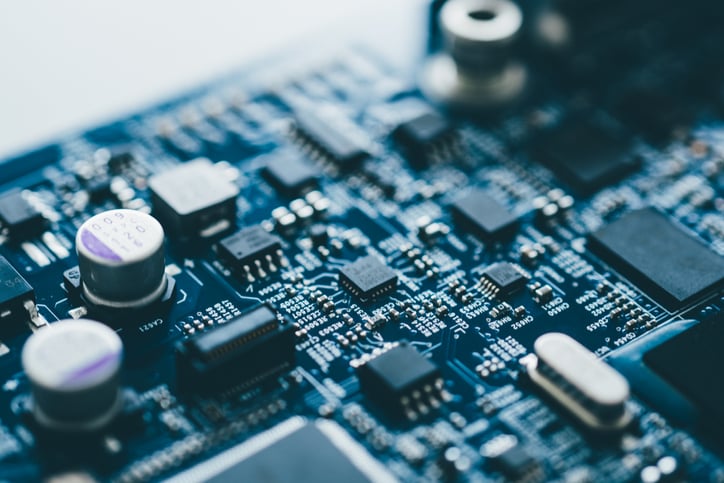For printed electronics, the function of your application often determines the printing process you use. To get the functioning right, the printing process should be chosen carefully. There are several possible solutions, but the perfect combination of ink and printing technique is different for each application. Like the application you print, the ink often has a specific function as well. For example, electrically conductive inks are inks that can conduct electricity.
The optimum solution is a combination of costs and performance. How can you find the solution that fits your printing needs best? To understand this, we first need to focus on which challenges might determine your choice.
The Challenges of Conducting
The main reason you are looking for a new printing solution for your conductive inks, such as Rotary Screen Printing, is that you want to overcome some challenges or problems in your process. As an example: not all techniques are suitable for printing a higher viscosity. Rotary screen printing is.
An important issue with drying conductive inks for printed electronics is the trade-off between the temperature required and the time needed. Printing companies want to produce as fast as possible, but time is needed for polymerization, which preferably takes place at a high temperature. As printing is often done on film or plastic, the temperature is limited. This causes the curing process to take longer. This time-consuming process does not fit the desired manufacturing time and costs.

The required printed thickness in combination with narrow lines is also often a challenge. The specifications of screens require careful consideration of the requirements of the process and the customer's wishes.
The right specification of the screen and emulsion thickness ensures that you have maximum control over the thickness of the layer printed. This is important, as a printed track must have a certain performance to obtain the right functionality.
It is often thought that the consumption of conductive inks for rotary screen printing is higher than with flatbed screen printing, but that is incorrect. Although more ink is needed to pre-fill the system, the total consumption is determined by the amount printed. The consumption is the same as with other printing techniques. After printing, the ink residue can be reclaimed from the screen. An overview of all printing techniques and their main advantages and limitations can be found in our free comparison sheet.
Variations in Electrically Conductive Ink for rotary screens
In order to understand what type of electrically conductive ink and printing technique suits your printing needs best, one must know that there is a broad spectrum of conductive inks for (rotary) screen printing.
This is quite logical if you consider that the applications within printed electronics are so diverse. For example, rotary screen printing can help in creating batteries, printed antennas for wireless communications, healthcare and dozens of other applications. All of these require different printing processes and inks. It could even be argued that every application needs its specific approach and therefore unique conductive inks and screens.
Because of all these variations, it is important to consider which type of rotary screen best suits the ink to be used or the substrate to be printed. A screen supplier like SPGPrints can support in determining the most suitable solution together with ink suppliers, (like Henkel or Dupont). At SPGPrints we realize this triangular relationship - between customer, screen supplier and ink supplier - is essential in finding the most suitable solution for your unique application. Together we find the one solution that gives the best result.
SPGPrints also follows the latest innovations as the ink market is strongly in development. For example, Copprint and PrintCB are both developing copper inks that enable more cost-efficient printed electronics. Because of the large volumes, rotary screen printing would be very interesting for printing with copper.
Compatibility between screen and electrically conductive ink
The cooperation between screen suppliers and ink suppliers allows for careful consideration of which elements are most compatible. The type of electrically conductive ink is usually determined at an early stage, so the screen should be selected accordingly. Factors that are important for this compatibility between ink and screen are:
- Particle size of the ink
- Ink Deposit
- Resolution
Conductive inks for screen printing work like other uses of rotary screen printing. The ink is pressed through the screens in liquid form but eventually becomes a conductive track. The ink consists of silver, carbon or other materials, often with a conductive polymer and a solvent to keep it liquid. A rotary screen consists of an electroformed nickel mesh, over which an engraved layer of lacquer is placed. The mesh and lacquer create a certain thickness together, which determines the final shape and printing result.

Important to know is that the transition from flatbed to rotary screen printing can practically be made one-to-one. No or limited change in your printing properties is necessary.
Bridging the gap: Production-as-a-Service
Printed electronics have incredible potential for multiple markets and user applications. However, adopting new production processes, trying new inks or introducing new machinery often entails significant financial investment.
This is where the Production-as-a-Service (PaaS) concept is a game changer. PaaS enables companies considering investing in high-throughput machines capable of producing printed electronics at an industrial scale to run small batches. At SPGPrints, we recently launched this new service to allow customers to learn about and try out new production options – offering them a risk-free option to trial new print technologies and experience the benefits. Curious to learn more about this concept and its benefits?





